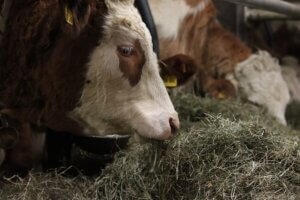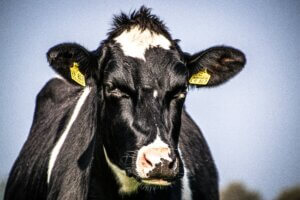- (731) 665-7488
- 14 Circle S Road, Rutherford, TN 38369
First-generation farmers view their livestock like their pets. While that is charming, it causes some interesting questions when they visit Circle S. I’ve lost track of how many times, I’ve had a bright young person ask me why they can’t give their livestock pet food.
Your dog, cat, goldfish, hamster has different dietary needs than livestock. While you might see a horse grazing on grass, it doesn’t mean that Mister Ed is ready to mow your lawn. For that, you would need John Deere or an ornery goat.
Even grass must be carefully prepared, processed into hay and then blended into a rotation to properly supplement a diet. All your cat needs for you to do is dish out the Whiskas and get out of its face.
The reason you don’t treat your livestock like your pets is that a horse the size of your Uber needs a little more consideration than your 10-pound Pomeranian. Forget all of the Science Diet and recommendations from your vet. The little guy you take for walks around the block doesn’t require the same daily movement just to eat. Don’t believe me?
When you go driving this week, look at the local farms. All of that space that isn’t used for direct farming isn’t for showing off.

The more industrious farmers can mill and mix their own livestock feed. However, it’s not recommended. Does that mean it is impossible? Of course not. What we’re saying is that most of the people asking about making their own livestock feed, don’t have the time or resources for the commitment. But, if you want to go down this path, here are some options available.
Free-range grasses work best for animals such as horses and cattle. That means you will need to be able to rotate pastures. If you can’t rotate pastures to produce enough feed, then you must buy hay. That can get expensive and you might not always be sure what kind of hay you’re buying.
Pigs are the easiest for producing your own livestock feed. Like most of the smaller livestock options, you don’t have to worry about space. Feeding pigs usually requires making use of the scraps and related tidbits you already have on your farm. Barley, wheat and soybean remnants can be scrapped together and broken down into a baseline feed. The catch is knowing how much each size of pigs needs to chow down.

Chickens need a very fine grain. After all, our little feathered friends don’t have teeth. Still, these little guys will graze on a wide variety of grain. Even with that, your chickens should still be supplemented with a good mix of grains for a balanced diet.
But, what do you do if you’re out of farm space to make your own feed? As mentioned before, you can start getting into the pricey hay buying race. Yet, what happens if Farmer Brown treats his hay with chemicals? What happens if you buy a bad batch of hay?
Then, the effort to mill and mix your own livestock feed would be for not. You could still make your own if you have the space and time but take it from your livestock management friends. Stick to a known supplier that can keep your livestock well-fed and happy.
It’s every farmer’s dreams to have a large herd of livestock. Images of cowboys moving large amounts of cattle fill the heads of those toiling to make sure that this year’s newest critters get fed. Yet, all those dreams take a great deal of space to keep large herds happy and grazing. That’s right, fellow farmers. It’s going take wide open spaces for your livestock to feed.
Circle S Farm Supply realizes that not every farmer is working with a large swath of land. However, large herds of livestock need to roam, graze and possibly have rotated feeds. Even if you don’t make your own feed, you still must find a dedicated supplier to keep your livestock well-fed.

Even when you check off all those boxes, there still must be a set schedule to keep the livestock fed. That’s why we recommend hay rings and hay savers. Not every farmer can be out in the pasture making sure every herd eats right.
But, what you can do is buy one of our Bextra hay savers and make sure that the amount of feed is properly regulated. That’s right, farmers. Much like your stubborn house cat or littlest grand kid, you’ve got to keep an eye on how much your livestock eats.